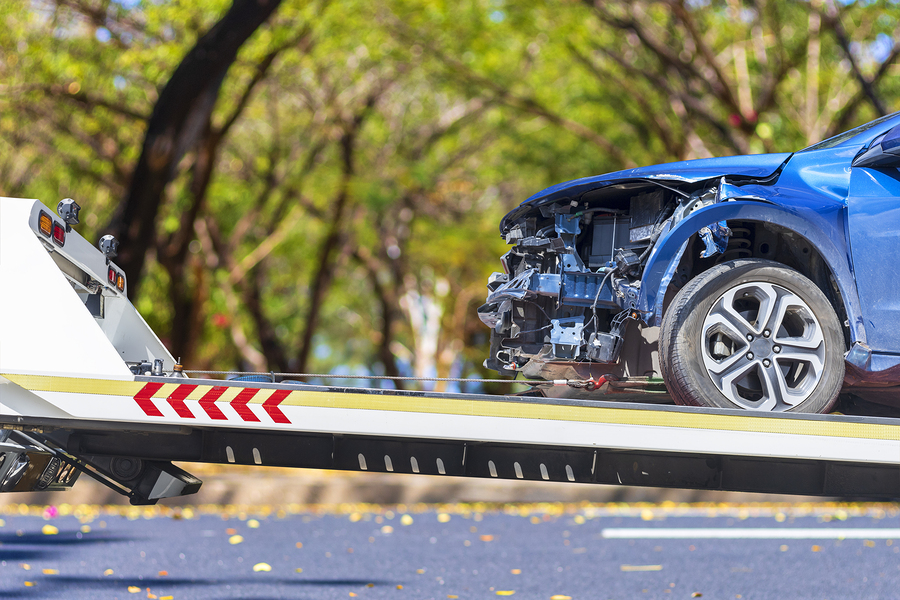
Car crashes can happen to anyone. Even drivers who faithfully follow traffic laws can find themselves in a motor vehicle accident. Though accidents happen suddenly and unexpectedly, learning about the five most common car accidents can help you anticipate how and when they might happen. You may be able to avoid an accident altogether.
Introduction to Motor Vehicle Accidents
Motor vehicle accidents are an unfortunate reality on today’s roads, affecting millions of drivers, passengers, and pedestrians each year. Also known as car accidents or auto accidents, these incidents can lead to a wide range of car accident injuries, from minor scrapes to life-altering trauma, and even fatalities. Car crashes are among the leading causes of death and injury worldwide, resulting in significant personal and economic losses for those involved. The most common causes of motor vehicle accidents include distracted driving, speeding, and reckless behavior behind the wheel. Understanding the different types of car accidents and their causes can help drivers recognize potential hazards and take steps to avoid a car wreck. If you or someone you care about has been involved in a car accident, consulting a personal injury attorney is crucial to protect your rights and explore your options for recovery. By staying informed and vigilant, drivers can help reduce the risk of accidents and keep our roads safer for everyone.
Understanding Car Accident Statistics
Car accident statistics provide valuable insight into the patterns and causes of car crashes on our roads. Rear-end collisions are among the most frequent types of car accidents, often leading to a significant number of motor vehicle fatalities each year. Other common accident types include head-on collisions, single-vehicle crashes, and multi-vehicle accidents, each presenting unique risks to car occupants and other road users. Factors such as traffic signals, road conditions, and weather conditions can all increase the likelihood of a traffic accident.
Additionally, driver behavior—especially distracted driving, speeding, and failing to obey traffic signals—plays a major role in why accidents frequently occur. By analyzing these statistics, communities and policymakers can identify areas where road safety improvements are needed, ultimately working to reduce the number of car accidents and save lives.
Causes of Car Accidents
The causes of car accidents are often complex, involving a combination of human error, mechanical issues, and environmental factors. Distracted driving remains one of the leading contributors to car crashes, with activities like texting, talking on a cell phone, or eating behind the wheel taking drivers’ attention away from the road. Speeding, reckless driving, and ignoring traffic signals—such as running red lights or failing to stop at a stop sign—also significantly increase the risk of an accident. Driver fatigue can impair reaction times and decision-making, while poor vehicle maintenance can lead to unexpected breakdowns or malfunctions. Even the most experienced drivers can be caught off guard by sudden changes in weather conditions or road hazards. By understanding these common causes, drivers can make safer choices and help prevent car accidents before they happen.
The Five Most Common Types of Car Accidents
When it comes to car accidents, certain types occur more frequently than others. The five most common types of car accidents include rear-end collisions, head-on collisions, single-vehicle crashes, multi-vehicle accidents, and incidents involving pedestrians or cyclists. Rear-end collisions typically happen when a driver fails to stop in time, often due to distracted driving or following too closely. Head-on collisions, which involve two vehicles striking each other front-to-front, are particularly dangerous and can result in serious injuries or fatalities.
Single-vehicle crashes involve only one vehicle and may be caused by driver error, mechanical failure, or hazardous road conditions. Multi-vehicle accidents, sometimes called pileups, can be especially complex, involving more than one driver and multiple vehicles. Accidents involving pedestrians or cyclists highlight the importance of sharing the road and staying alert to vulnerable road users. In such cases, consulting a personal injury attorney can help injured victims understand their rights and pursue compensation for their injuries.
Side Impact/T-Bone
Side impact accidents are common. They happen when a vehicle either collides head-first or reverses into the side of another vehicle. Because of the “T” shape created by the two damaged cars, these accidents are also known as T-bone collisions.
Occupants seated next to impacted doors are especially vulnerable. In both rear-end and head-on car crashes, there is a larger buffer between passengers and the other vehicle. Unfortunately, car doors and glass windows are less durable in protecting victims of side impact accidents. Consequently, the impact of these accidents is more direct and often painful.
Typically, a side impact collision takes place in the middle of an intersection, head-on. Close to 25% of traffic fatalities in the United States are associated with intersections, according to the Federal Highway Association.
Surprisingly, this type of car crash tends to happen on roads that aren’t busy. Clear roads can misleadingly make motorists feel safer, so they aren’t on full alert. Often one driver misses a red light or a stop sign, resulting in a collision. Failure to yield the right of way at intersections is a common cause of side impact accidents. Keeping an eye out for these distracted drivers at intersections could help you avoid an accident.
Collisions While Merging
On a busy road or highway, navigating traffic in a single lane can be a challenge in itself. Naturally, the potential for a car crash increases when merging between lanes.
It’s easy to see how carelessly merging across multiple lanes, cutting off other drivers, and failing to use a turn signal lead to car crashes. Changing lanes unpredictably or at inappropriate speeds, especially without checking blind spots, can also increase the risk of collisions while merging. But unaggressive driving can also lead to collisions while merging.
Motorists can misjudge how much space they have to move into an adjacent lane. Some drivers cause motor vehicle accidents when they enter a highway too slowly. Others accelerate too quickly when merging.
To prevent this type of motor vehicle accident, it is critical to check your blind spots before merging. Also, you don’t want to disrupt the flow of traffic; yield to the lane you want to enter, but maintain a reasonable speed and avoid fully stopping.
Rear-End Accidents
Rear-end accidents can occur when a sudden stop is necessary and drivers aren’t able to react quickly enough. You may have witnessed one near a red light or stop sign.
These accidents are often a result of distracted driving. It’s all too common for motorists to divide their attention between handheld devices, loud music, passengers, and the road. When multitasking, drivers give themselves less response time to come to a halt.
Just a few seconds can mean the difference between a safe stop and a rear-end collision. Some drivers dismiss these rear-end car crashes as minor. Determining fault in a rear end accident often involves assessing the actions of both the following driver and the front driver, especially if the front driver stopped abruptly or unexpectedly. In reality, they can result in chronic pain and expensive repairs.
Worn-out brakes or tires can also contribute to rear-end motor vehicle accidents. Malfunctioning or unlit brake lights can make it harder for following drivers to react in time, increasing the risk of a rear-end accident. If you’re new to Stuart, Florida, you might not know that for Florida drivers, annual vehicle inspections aren’t required. There is no way to ensure that other cars are road-ready or that other drivers are attentive. Fortunately, keeping your own vehicle in quality shape and staying focused can help you maintain control when you need to react quickly.
Head-On Crashes
Head-on collisions often happen when one driver is traveling the wrong way on a one-way road. In other circumstances, distracted drivers veer off their intended path into oncoming traffic.
Colliding with another vehicle head-on can be one of the most terrifying car crashes a person can experience. Head-on collisions also result in incredible destruction, both physically and financially. These crashes frequently result in catastrophic injuries and head injuries due to the force of impact. Modern airbags and other improvements in technology have decreased the severity of head-on collisions in many cases. Yet they remain one of the deadliest types of car accidents. Head-on collisions account for a disproportionate number of fatal accidents, fatal crashes, and crash fatalities compared to other types of collisions.
The sheer force of two vehicles propelling into each other can tragically lead to serious injuries, including brain damage. Passengers involved in head-on collisions could suffer traumatic brain injuries, or TBIs, sudden damage to the brain from a blow to the head. Severe, irreversible brain damage is a possible outcome. Even mild concussions can have serious impacts without proper medical attention.
Multi-Vehicle Pileups
A multiple-vehicle pileup is a collision involving more than one vehicle, often resulting in a chain reaction with many cars. They sometimes happen when a massive vehicle, an 18-wheeler for instance, swerves and overturns in the path of other cars. Other times, multiple-vehicle pile-ups begin with one car rear-ending a vehicle, propelling it into another. Other vehicles in close proximity can create additional hazards and increase the likelihood of a pileup.
These chain-reaction car crashes tend to happen on congested roads and highways. Various factors, such as poor visibility and slippery roads, can contribute to the occurrence of multi-vehicle pileups. As the number of vehicles in a pileup increases, so does the number of passengers at risk. These accidents can result in serious injury or even death for those involved. Busy, blocked roads and a tangled pile of cars only act as additional obstacles for first responders.
To reduce the likelihood of a multiple-vehicle pileup, travel a reasonable distance away from the car in front of you. Driving at or below the speed limit also helps to mitigate your risks.
Injuries Resulting from Car Accidents
Car accidents can cause a wide spectrum of injuries, ranging from minor injuries like cuts and bruises to severe and life-threatening conditions. Common car accident injuries include head and neck injuries, such as whiplash and concussions, as well as traumatic brain injuries that can have lasting effects on a person’s health and quality of life. Internal injuries, broken bones, and neck injuries are also frequently seen in car crashes, especially in high-speed or high-impact collisions. The severity of injuries often depends on factors like the type of accident, the speed of the vehicles involved, and whether safety features like seatbelts and airbags were used. In the most serious cases, car accidents can result in fatal injuries, underscoring the importance of safe driving and adherence to traffic laws. If you or a loved one has suffered injuries in a car accident, it is essential to seek immediate medical attention and consult a personal injury attorney to ensure your rights are protected and to explore your options for compensation.
Contact The Eberst Law Firm
No matter the type of car crash, no motor vehicle accident is too small to be overlooked. If you or a loved one suffer a car accident, through no fault of your own, contact Eberst Law Firm today. Our dedicated personal injury attorneys work tirelessly to represent our valued clients and we strive to achieve maximum compensation. You can reach our Stuart, Florida team by contacting us online or by phone at (772) 225-4900. We offer a free case review to help you understand your legal options after a car accident.
